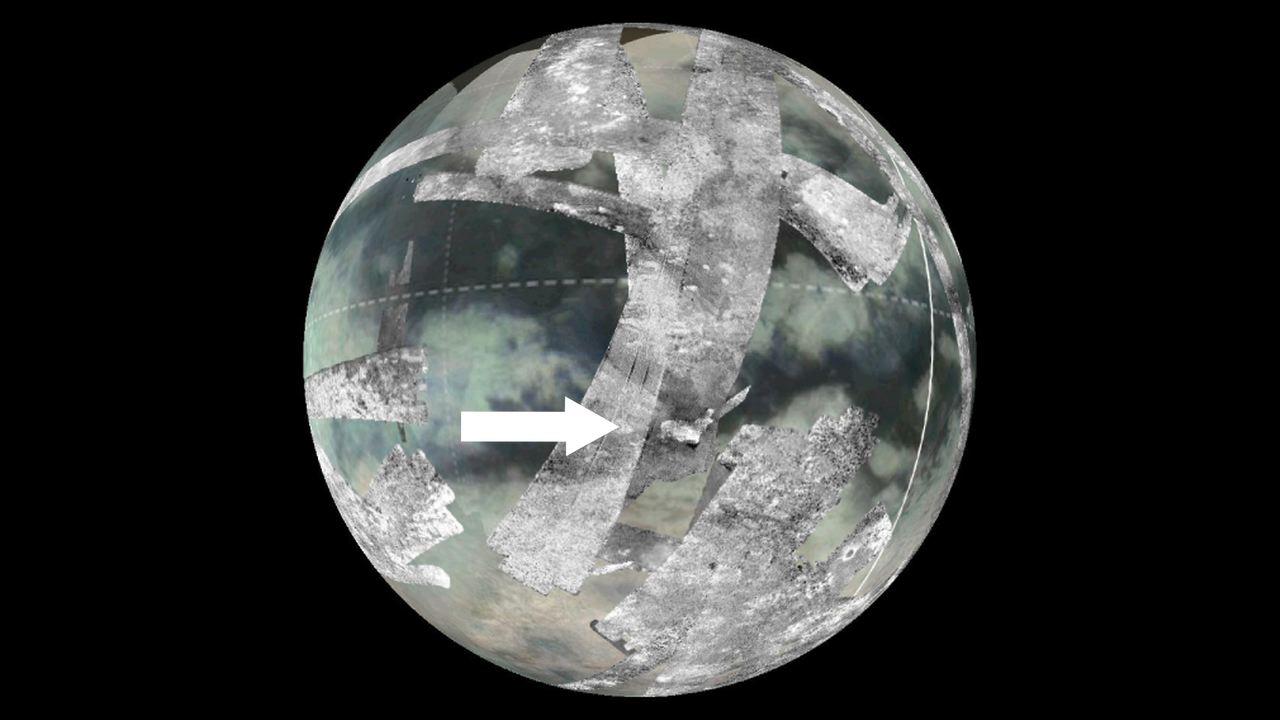Global View of Sotra Facula, Titan

| PIA Number | PIA13696 |
|---|---|
| Language |
|
This image shows the location of an area known as Sotra Facula on Saturn’s moon Titan. The black and white swaths show data obtained by the radar instrument on NASA’s Cassini spacecraft. The swaths were laid on top of a global composite image from Cassini’s visual and infrared mapping spectrometer. Scientists believe the Sotra Facula region makes the best case for a cryovolcanic – or ice volcano – region on Titan. The area is located around 15 degrees south latitude, 40 degrees west longitude.
The Cassini-Huygens mission is a cooperative project of NASA, the European Space Agency and the Italian Space Agency (ASI). The Jet Propulsion Laboratory, a division of the California Institute of Technology, Pasadena, manages the mission for NASA's Science Mission Directorate, Washington. The Cassini orbiter was designed, developed and assembled at JPL. The radar instrument was built by JPL and ASI, working with team members from the U.S. and several European countries. The visual and infrared mapping spectrometer was built by JPL, with a major contribution by ASI. The visual and infrared mapping spectrometer science team is based at the University of Arizona, Tucson.
Credit: NASA/JPL-Caltech/University of Arizona
